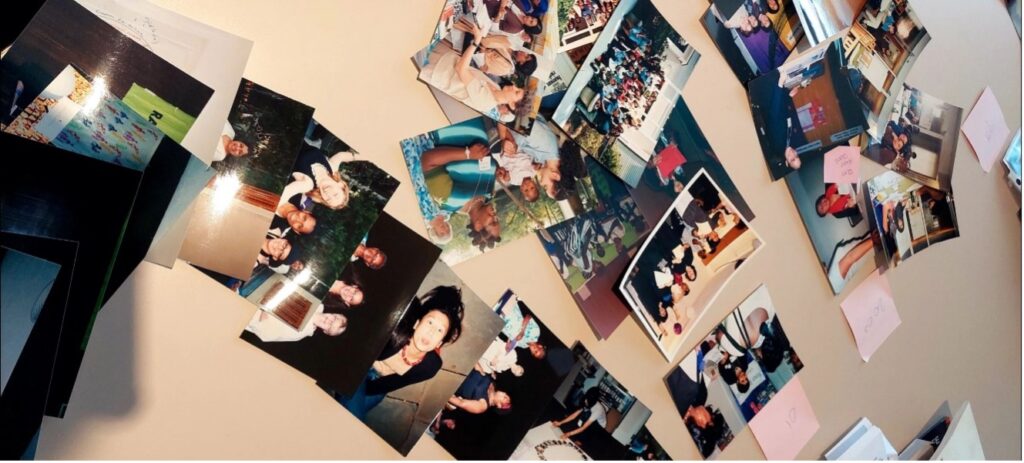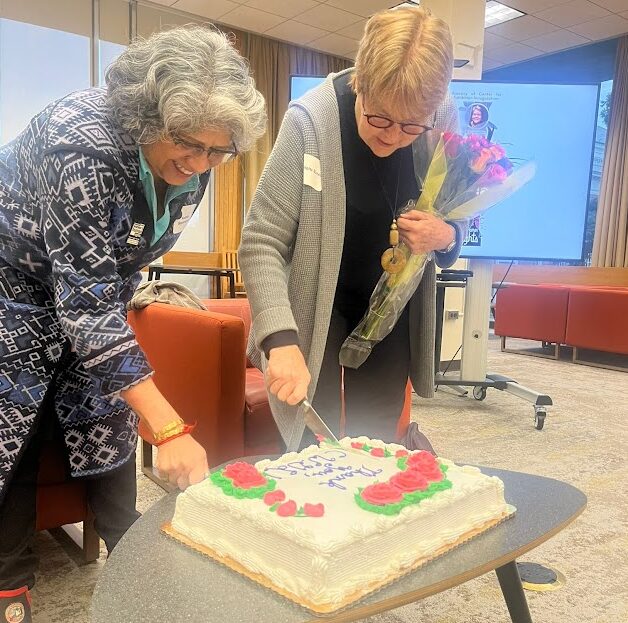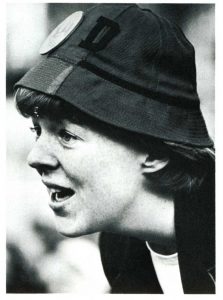Post by Darya Tahvildar-Zadeh, SC&I, MI student. October 2025.
The Women’s File is a collection of magazines, pamphlets, newsletters, posters, and academic articles from the 1970s to the 2000s pertaining to women’s issues such as abortion, education, employment, and the liberation movement. While there is a focus on New Jersey and the United States, there are international materials included as well. The File was started in the 1970s by various librarians of the Mabel Smith Douglass Library and materials have been added to the collection since then.
 Working on the Women’s File for the past four months has been an immersive and transformative experience. As a current LIS graduate student in the School of Communication and Information and a part-time public library employee, my focus is on public librarianship. Last semester, Kayo Denda approached me about evaluating new materials preserved in boxes from former WGS professors for the Women’s File, adding them into the collection, and updating the Women’s File digital spreadsheet. The Women’s File has been my introduction to archives, organizing, and cataloging.
Working on the Women’s File for the past four months has been an immersive and transformative experience. As a current LIS graduate student in the School of Communication and Information and a part-time public library employee, my focus is on public librarianship. Last semester, Kayo Denda approached me about evaluating new materials preserved in boxes from former WGS professors for the Women’s File, adding them into the collection, and updating the Women’s File digital spreadsheet. The Women’s File has been my introduction to archives, organizing, and cataloging.
There is something about working with historical materials that feels sacred. As I flip through the materials I feel connected to the feminist activists who worked tirelessly to fight for gender justice. Many of the organizations whose materials are contained in the Files are no longer active, but their ideas and legacies live on. Whenever I see materials that a friend of mine may appreciate or relate to, I snap a picture. My friend who is passionate about the intersectional identities of being Asian and queer would be interested in the Breakout Newsletter, a publication from a lesbian activist group out of Manila, Philippines in the 1990s (pictured below). My friend who loves Renaissance history and critical gender analysis would love to read the academic paper on “Hermaphrodites in Renaissance France,” published in Critical Matrix (also pictured below). Even the fact that these materials have been collected and preserved for so long feels like a form of activism in itself.
 While looking through the boxes I came across dozens of memos between former Rutgers professors and deans regarding the status of the Women’s Studies Program at Rutgers from the 1990s to the 2000s. Because it used to be a program and not a department, professors who taught within the program (almost all women at the time) found it much more difficult to achieve tenure, an essential mark of career stability and success for academics. A department designation would also lead to a larger budget. There were memos from a consortium of Women’s Studies Program professors advocating for each other and proclaiming to the administration the value of Women’s Studies. There were letters to Women’s Studies departments at other universities, asking for the steps and process of how they became an official department. There were printouts of statistics from WS departments at other universities. Looking through these papers I felt the extent of the tenacity and perseverance necessary to achieve even the smallest of structural changes in a historically male-dominated field. I couldn’t help but be impressed and also frustrated at how much work it takes. When we preserve documents such as these, we show scholars of the future that change is possible but that it takes incredibly hard work, a mountain of patience, and the ability to endure many setbacks. These memos have been sent over to Special Collections and University Archives at Alexander Library to be processed.
While looking through the boxes I came across dozens of memos between former Rutgers professors and deans regarding the status of the Women’s Studies Program at Rutgers from the 1990s to the 2000s. Because it used to be a program and not a department, professors who taught within the program (almost all women at the time) found it much more difficult to achieve tenure, an essential mark of career stability and success for academics. A department designation would also lead to a larger budget. There were memos from a consortium of Women’s Studies Program professors advocating for each other and proclaiming to the administration the value of Women’s Studies. There were letters to Women’s Studies departments at other universities, asking for the steps and process of how they became an official department. There were printouts of statistics from WS departments at other universities. Looking through these papers I felt the extent of the tenacity and perseverance necessary to achieve even the smallest of structural changes in a historically male-dominated field. I couldn’t help but be impressed and also frustrated at how much work it takes. When we preserve documents such as these, we show scholars of the future that change is possible but that it takes incredibly hard work, a mountain of patience, and the ability to endure many setbacks. These memos have been sent over to Special Collections and University Archives at Alexander Library to be processed.
In the digital age, working with physical materials is a rare and intimate delight. While flipping through these newsletters and pamphlets, I often find myself thinking about the time, care, and effort it took to write, print, and distribute these ideas. Someone had to write the memo, then someone had to type it (usually someone trained to use a typewriter). Then copies had to be made and addresses had to be written on the envelopes, then a mail carrier had to deliver these envelopes to hundreds of recipients. Recipients in the Women’s Studies Department at Rutgers then held on to these papers for decades. People often view social media as integral to organizing for social change, but people were mobilizing long before social media was invented.
 A university professor browsing the materials for her feminist theory class expressed awe at the fact that some of the ideas presented seem so radical and progressive for the time. For example, filed under “Abortion,” there are pamphlets from the 60s and 70s distributed by pro-abortion religious organizations reconciling religion with abortion and advocating for safe, accessible abortions. It feels intense to consider this idea when just three years ago Roe v. Wade was overturned in the United States, with many advocates citing religious reasons for the decision.
A university professor browsing the materials for her feminist theory class expressed awe at the fact that some of the ideas presented seem so radical and progressive for the time. For example, filed under “Abortion,” there are pamphlets from the 60s and 70s distributed by pro-abortion religious organizations reconciling religion with abortion and advocating for safe, accessible abortions. It feels intense to consider this idea when just three years ago Roe v. Wade was overturned in the United States, with many advocates citing religious reasons for the decision.
It is also fascinating to consider the issue of subject headings and terminology when it comes to these historical files. Should the historical subject terms be preserved when cataloging these materials? Should terms such as “Blacks” (now replaced as “Black people”) and “Hermaphrodites” (now replaced as “Intersex people”) which may be considered offensive be updated or preserved to showcase the language of the time at which the materials were gathered? I chose to update the labels concerning identities due to the fact that users accessing the materials may feel uncomfortable at encountering outdated or dehumanizing terminology. Additionally, those subject terms have been updated in the Library of Congress Subject Headings and our collection should be updated to reflect those changes.
 The Women’s File can currently be accessed on the Mezzanine floor of the Mabel Smith Douglass library on Douglass Campus at Rutgers University– New Brunswick. For access, please contact Kayo Denda, Head of Margery Somers Foster Center and Librarian for Women’s, Gender and Sexuality Studies (kdenda@rutgers.edu).
The Women’s File can currently be accessed on the Mezzanine floor of the Mabel Smith Douglass library on Douglass Campus at Rutgers University– New Brunswick. For access, please contact Kayo Denda, Head of Margery Somers Foster Center and Librarian for Women’s, Gender and Sexuality Studies (kdenda@rutgers.edu).





 Kayo Denda, Radhika Balakrishnan & Charlotte Bunch.
Kayo Denda, Radhika Balakrishnan & Charlotte Bunch.














